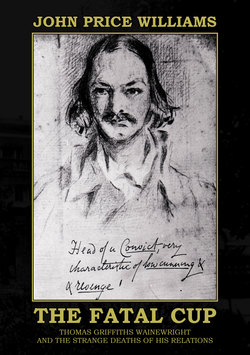Читать книгу The Fatal Cup: Thomas Griffiths Wainewright and the strange deaths of his relations - John Price Williams - Страница 19
На сайте Литреса книга снята с продажи.
Оглавлениеbecome apprenticed to one of the successful, fashionable Royal Academicians. He chose Thomas Phillips, whose portraiture was already famous. The National Portrait Gallery in London calls him prolific, since he completed more than 700 portraits, many of them of the great men of the day in the arts and sciences... At Phillips’ studios in George Street, off Hanover Square, the young dandy mixed the paints and met the famous. At that time Phillips was painting literary figures, a series commissioned by the publisher, John Murray.
To the George Street studio came Coleridge, Southey, Byron and others. Phillips’ famous 1813 portrait of Byron in dramatic Albanian costume now hangs in the National Portrait Gallery in London; it is one of three versions that he produced. He also painted four versions of Byron in a plain blue cloak one of which was exhibited at the Royal Academy in 1814. At the same time that this was painted, Wainewright himself portrayed the poet – in a similar pose.
Byron may have remembered the young apprentice from his sittings, of which there were at least four. He is said to have told his great friend the peculiar Lady Blessington - who was said to have transformed herself from an Irish slattern to a lady of quality - of the first man he ever saw wearing pale-lemon coloured gloves, “and devilish well they looked.” Many have attributed the wearing of these to Wainewright and he himself refers to wearing them in one of his essays. Gloves were a particular signifier of the dandy. The foppish Count d’Orsay, part of the scandalous ménage à trois with Lady Blessington and her husband, was
JOHN PRICE WILLIAMS
19
